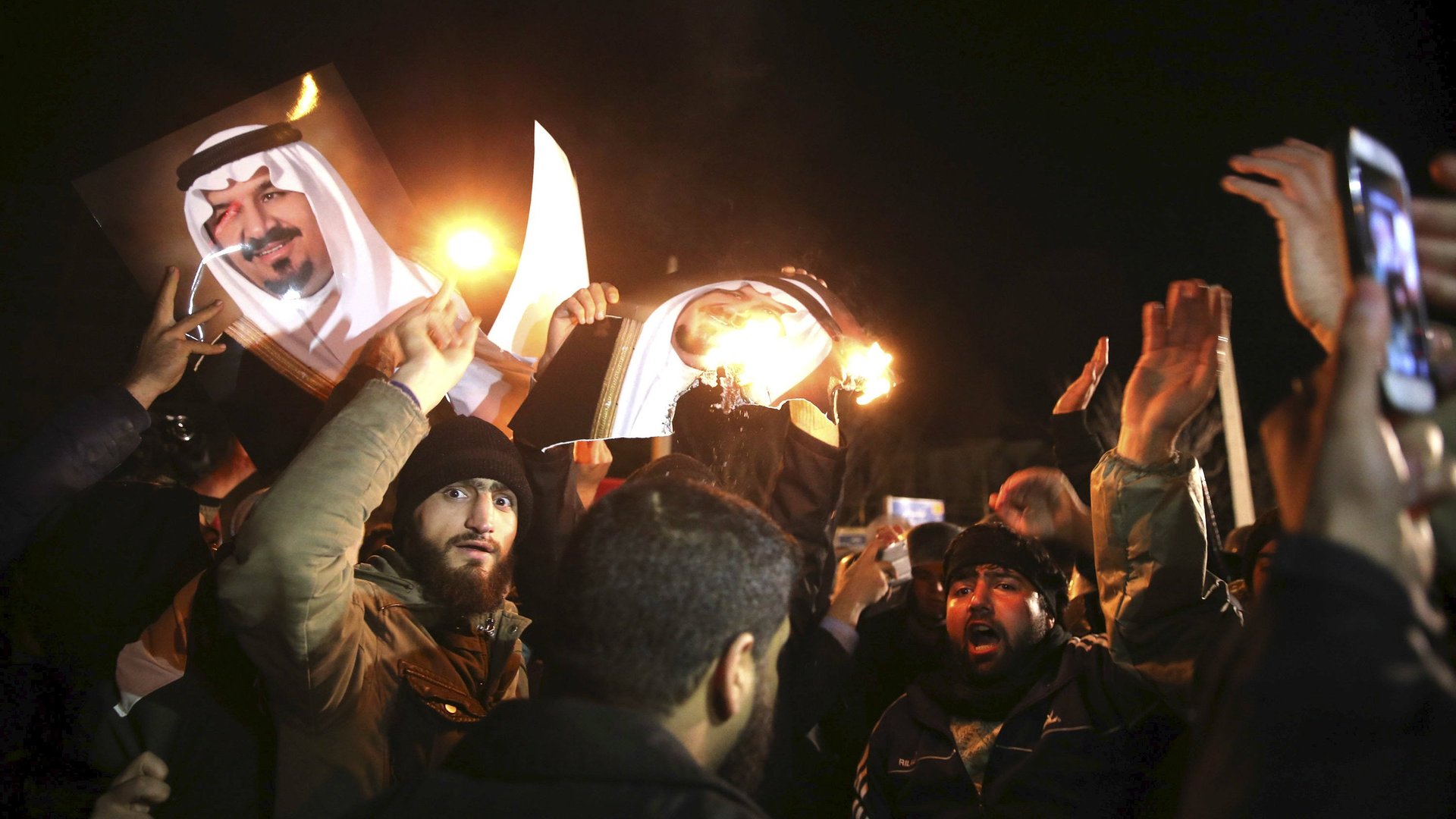How the Shia-Sunni split in 632AD led to Iran and Saudi Arabia’s power games today
The two powers of the Middle East, Iran and Saudi Arabia, are in the midst of a diplomatic row with roots that go back more than 1,300 years.


The two powers of the Middle East, Iran and Saudi Arabia, are in the midst of a diplomatic row with roots that go back more than 1,300 years.
After Sunni-led Saudi Arabia executed leading Shia cleric Nimr al-Nimr, an Iranian mob ransacked and set fire the Saudi embassy in Tehran shortly afterwards. Saudi Arabia has since severed diplomatic ties with Shia-led Iran following the attack on its embassy, ending both trade and air traffic links. Bahrain, Sudan, and the UAE have also downgraded ties with Iran.
At the heart of the row is a political fight that’s been brewing for centuries—which form of Islam should dominate the Middle East: Shia or Sunni?
Islam’s ancient split
All Muslims believe the prophet Mohammed unveiled a new monotheistic religion to the people of Mecca around 1,400 years ago. Mohammed’s teaching rapidly spread across Arabia, with his followers building an empire that spanned from Central Asia to Spain.
Following Mohammed’s death in 632AD, there was a fierce disagreement over the successor to the prophet. Sunnis insisted the successor should be the most qualified individual, while Shias—literally “Shiat Ali” or the “party of Ali”—believed the next rulers had to come from Mohammed’s bloodline, specifically Ali, Mohammed’s son-in-law.
Ali was assassinated in 661AD as a civil war in Islam brewed. This disagreement culminated in the battle of Karbala—in modern day Iraq—where Sunni rulers killed Mohammed’s grandson Hussein in 681AD. Geneive Abdo, a fellow at policy institute Stimson Center’s Middle East program, tells Quartz “the tragedy of Karbala and their act of human suffering and martyrdom has been the narrative that Shias have lived by for many years.”
Sunnis went on to win political power as well as enact a religious monopoly across the Arab world; they now make up between 85% and 90% of the population in the Middle East. Shias were often an oppressed minority, even denied access to political power in countries where they made up the overwhelming majority of the population—as in Bahrain, which is Sunni-controlled.
Iran and Saudi Arabia as regional rivals
It is two very young countries that have have helped reopen these old sectarian wounds.
Saudi Arabia, whose history dates back to the time of the prophet, was first unified by Abdel Aziz ibn Saud in 1932, who established an absolute monarchy. Wahhabism—a religious movement that wants to purify Sunni Islam and return religious practice to the Quran and Hadiths—heavily influenced the king and his successors’ rule. Wahhabism is named after Muhammad ibn Abd al-Wahhab, an 18th-century preacher who strongly opposed the Shias.
This power was dramatically challenged by the Iranian revolution of 1979, which put a Shia theocracy in charge of a huge and powerful nation. Sunni regimes, particularly Saudi Arabia, have been wary about Iran’s influence and power in the region since the 1979 revolution.
This distrust has only worsened in the last few decades, as Iran continues to launch a number of interventions in the Arab world, such as Iraq—where a Shia majority has dominated since the toppling of the Sunni-led regime controlled by Saddam Hussein—and now Yemen, where Iran and Saudi Arabia back opposing sides.
Saudi Arabia’s fear about its own grips on power in the region has grown dramatically since the Arab Spring, where a number of Shia activists called for equal rights in the kingdom, which continues to run segregationist policy against Shia muslims. The country brutally put down these protests—and those in neighboring Bahrain.
Al-Nimr was an opponent of the House of Saud; his execution gives Iran a reason to challenge Saudi Arabia and it gives the Shias something they wished they didn’t have—yet another martyr.